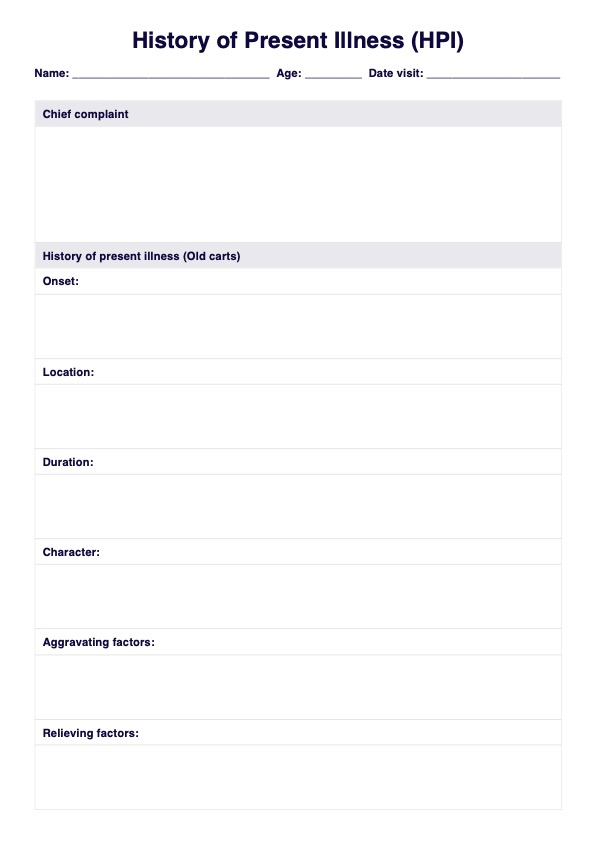Typically, any healthcare provider involved in patient assessment can complete an HPI, including physicians, nurse practitioners, physician assistants, and sometimes registered nurses, particularly in emergency department settings where detailed patient histories are crucial.

HPI Template
Download our comprehensive HPI Template to streamline and improve the collection of a patient's history of present illness (HPI), which is essential for accurate diagnosis and treatment planning.
HPI Template Template
Commonly asked questions
Accuracy is crucial as the chief complaint guides the direction of further questions and examinations performed, directly impacting the diagnostic process and subsequent treatment plans.
Medications can affect symptoms by alleviating them or causing side effects that may confuse the clinical picture. Thus, understanding a patient's medication regimen is essential for accurately interpreting symptoms and their severity.
EHR and practice management software
Get started for free
*No credit card required
Free
$0/usd
Unlimited clients
Telehealth
1GB of storage
Client portal text
Automated billing and online payments











